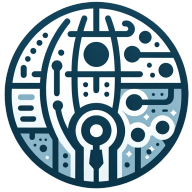Welcome to this comprehensive guide on mastering strategic human resource management. This blog post aims to provide a deep understanding of strategic human resource management, its importance, and how to implement it effectively in your organization. We will delve into the core elements, strategies, and benefits of strategic human resource management. Let's embark on this enlightening journey together.
Understanding Strategic Human Resource Management
Strategic Human Resource Management (SHRM) is a proactive approach to managing employees. It involves aligning the organization's human resource strategies with its business strategies. This alignment ensures that the organization can achieve its goals effectively and efficiently.
SHRM is not just about hiring and firing. It is about making strategic decisions about the workforce. These decisions can include who to hire, how to develop them, and how to retain them. It also involves creating a work environment that motivates employees and encourages them to perform at their best.
The importance of SHRM cannot be overstated. It can help an organization gain a competitive advantage. By managing its human resources strategically, an organization can attract and retain the best talent. This talent can help the organization achieve its business goals and stay ahead of its competitors.
Implementing SHRM is not an easy task. It requires a deep understanding of the organization's business strategies and its workforce. It also requires strong leadership and effective communication. However, the benefits of SHRM far outweigh the challenges.
Core Elements of Strategic Human Resource Management
There are several core elements of SHRM. These include strategic planning, talent management, performance management, and employee engagement.
Strategic planning involves setting the organization's human resource goals and developing strategies to achieve these goals. It requires a deep understanding of the organization's business strategies and its workforce.
Talent management involves attracting, developing, and retaining the best talent. It requires creating a work environment that motivates employees and encourages them to perform at their best.
Performance management involves setting performance expectations and providing feedback to employees. It requires regular performance reviews and constructive feedback.
Employee engagement involves creating a work environment that motivates employees and encourages them to perform at their best. It requires effective communication and strong leadership.
Strategies for Implementing Strategic Human Resource Management
Implementing SHRM requires a strategic approach. Here are some strategies that can help.
Firstly, align your human resource strategies with your business strategies. This alignment ensures that your human resource efforts support your business goals.
Secondly, invest in your employees. Provide them with the training and development opportunities they need to perform at their best. Also, create a work environment that motivates them and encourages them to perform at their best.
Thirdly, set clear performance expectations and provide regular feedback. This approach ensures that your employees know what is expected of them and how they are performing.
Lastly, communicate effectively. Keep your employees informed about the organization's goals and strategies. Also, listen to their ideas and concerns.
Benefits of Strategic Human Resource Management
SHRM offers several benefits. These include improved performance, increased competitiveness, and enhanced employee satisfaction.
Improved performance is a direct result of strategic planning and performance management. By setting clear performance expectations and providing regular feedback, you can help your employees perform at their best.
Increased competitiveness is a result of talent management. By attracting, developing, and retaining the best talent, you can gain a competitive advantage.
Enhanced employee satisfaction is a result of employee engagement. By creating a work environment that motivates employees and encourages them to perform at their best, you can enhance their job satisfaction.
Challenges of Implementing Strategic Human Resource Management
Despite its benefits, implementing SHRM can be challenging. Some of the challenges include resistance to change, lack of understanding, and lack of resources.
Resistance to change is a common challenge. Employees may resist changes to their work routines or responsibilities. To overcome this challenge, communicate the benefits of the changes and provide support during the transition period.
Lack of understanding is another challenge. Employees may not understand the purpose of SHRM or how it benefits them. To overcome this challenge, educate your employees about SHRM and its benefits.
Lack of resources is a third challenge. Implementing SHRM requires time, money, and effort. To overcome this challenge, prioritize your human resource efforts and allocate resources accordingly.
The Future of Strategic Human Resource Management
The future of SHRM is promising. With the increasing importance of human capital, organizations are recognizing the need for a strategic approach to managing their human resources.
In the future, we can expect to see more organizations adopting SHRM. We can also expect to see more research on the benefits of SHRM and more tools and techniques for implementing it.
The future of SHRM is not without challenges. However, with the right strategies and resources, these challenges can be overcome.
Wrapping Up Strategic Human Resource Management
Strategic Human Resource Management is a powerful tool for managing an organization's human resources. It involves aligning the organization's human resource strategies with its business strategies. This alignment can help the organization achieve its goals effectively and efficiently. Despite its challenges, the benefits of SHRM far outweigh the challenges. With the right strategies and resources, any organization can implement SHRM and reap its benefits.

